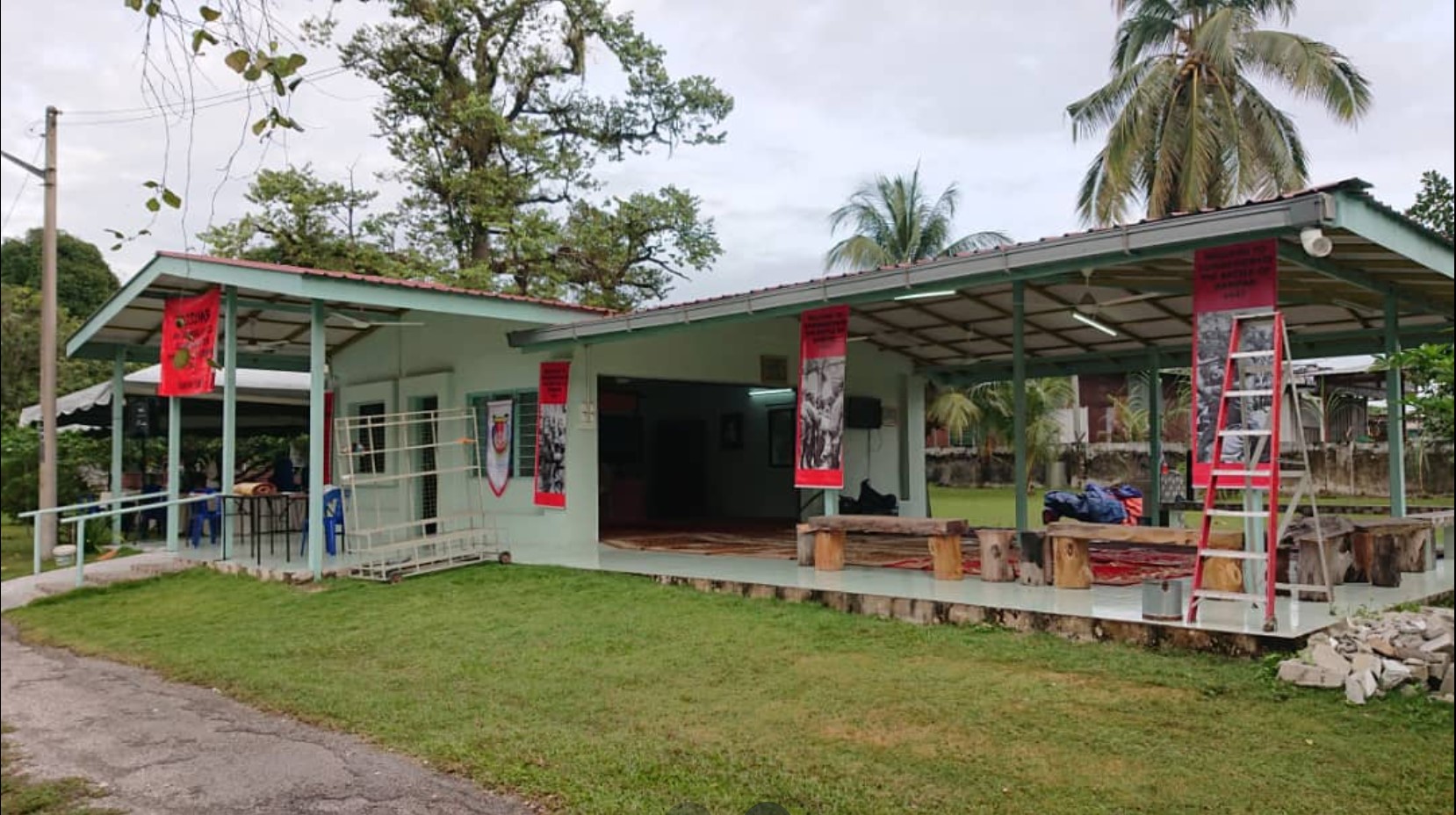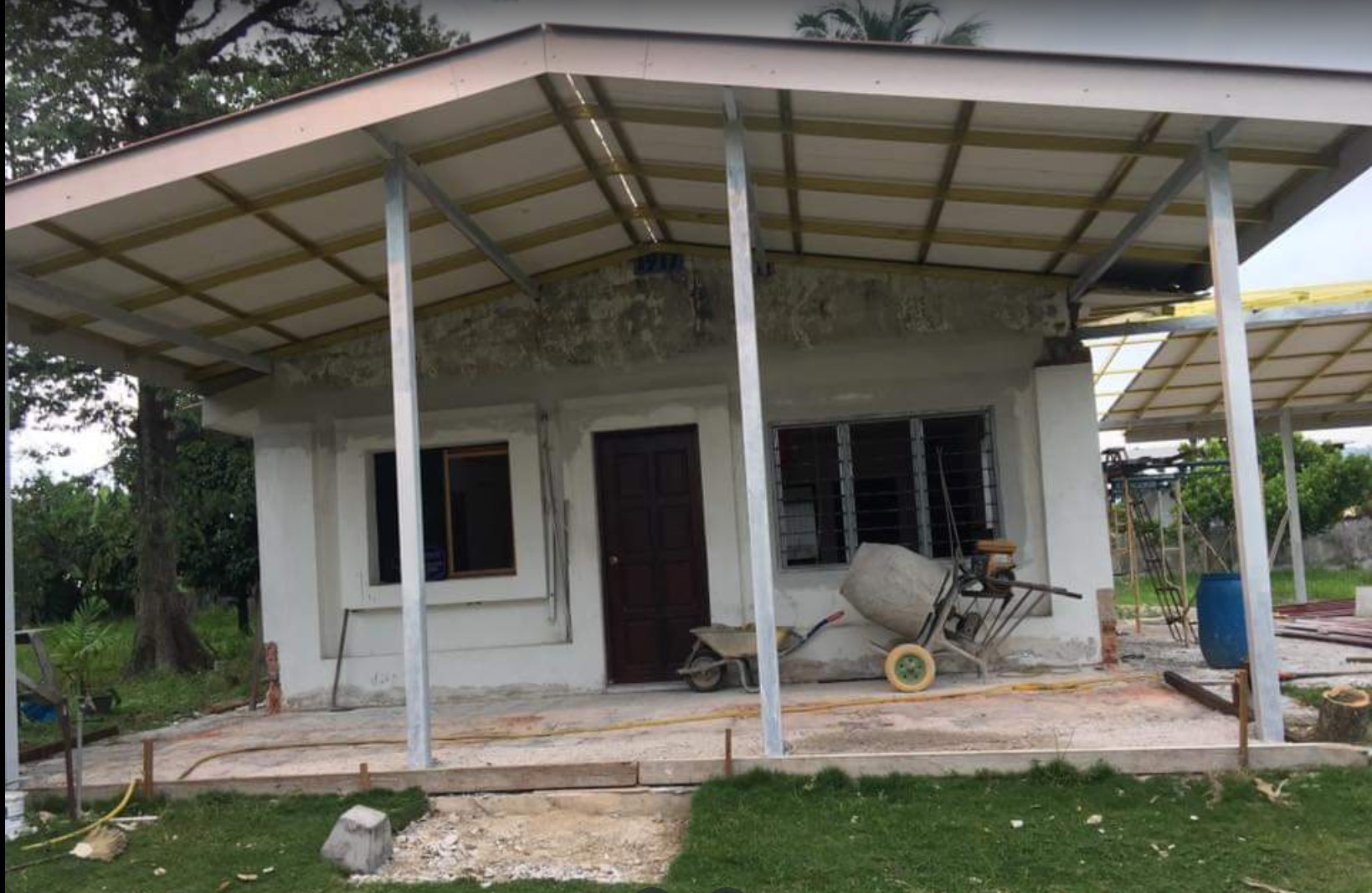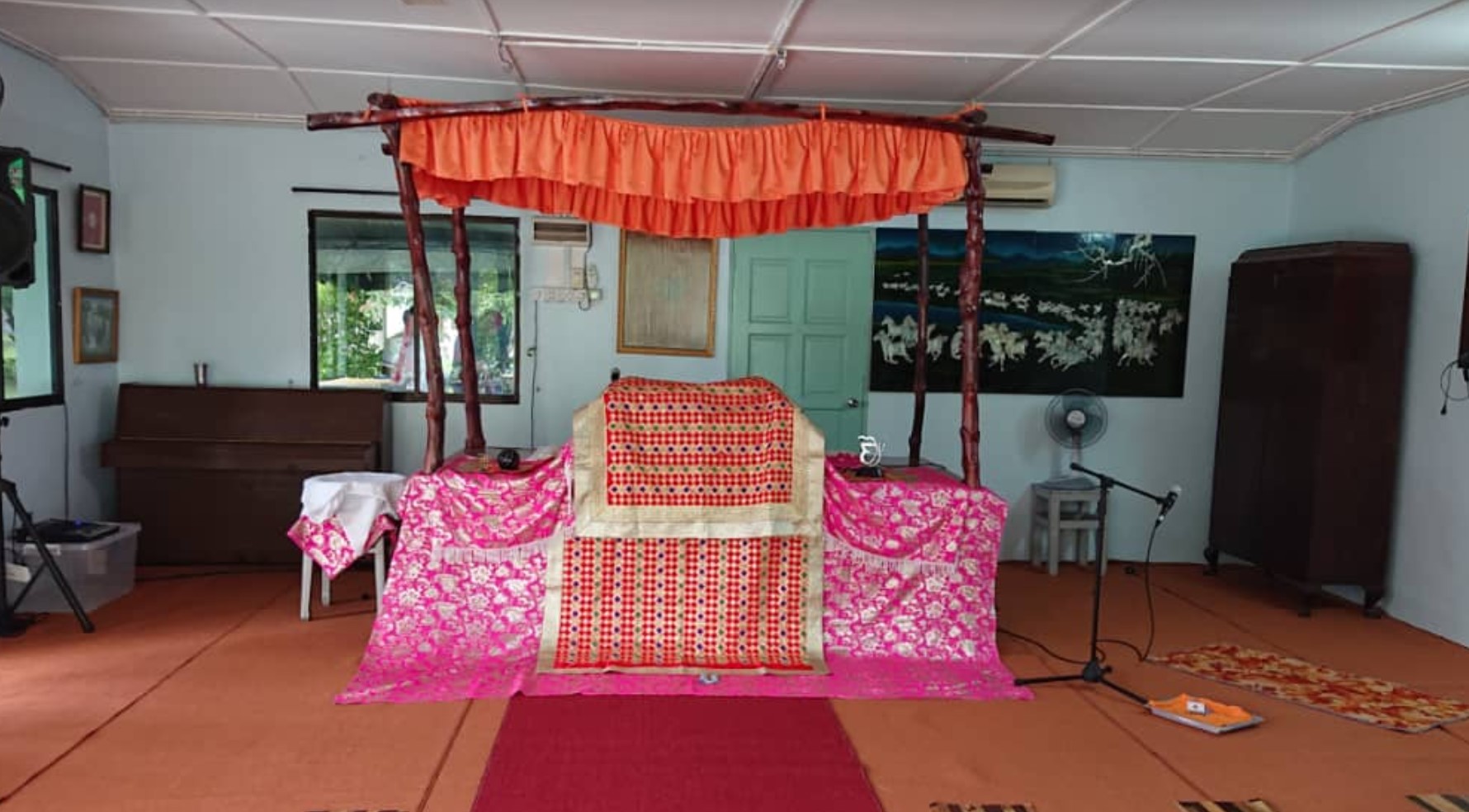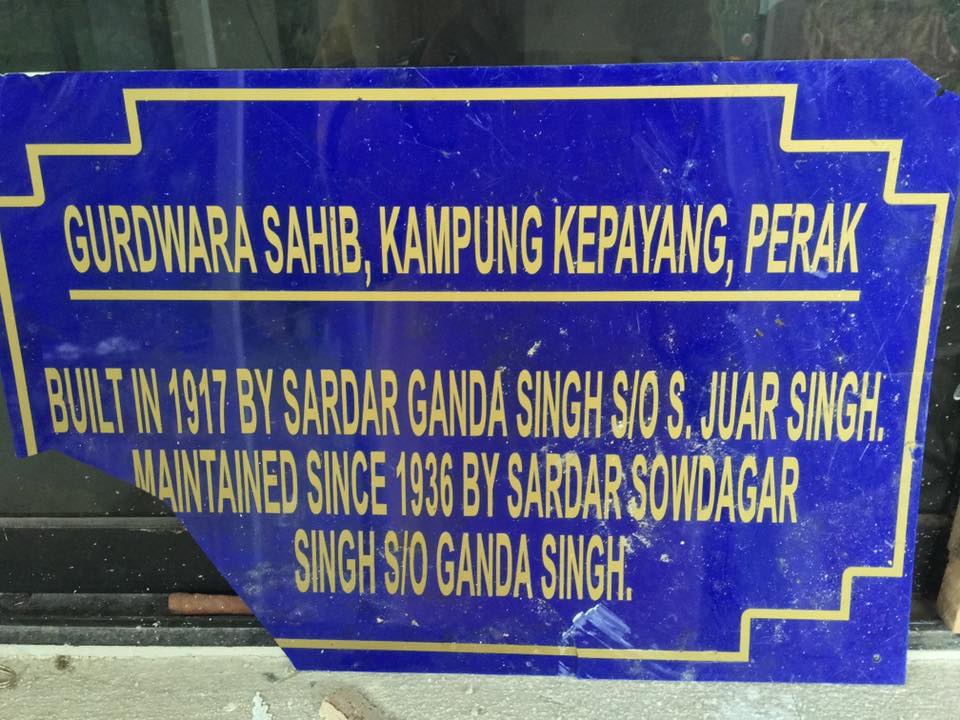Gurudwara Sahib Kampong Kepayang, Ipoh, Perak
Around 1900, there were several Sikh families residing around the Kampong Kepayang area. Most of them were dairy farmers or bullock cart operators while a few of them worked as general labourers.
These Sikhs built a Gurdwara Sahib around 1903 on private land belonging to a Malay. This Gurdwara Sahib was located opposite the Kg. Kepayang mosque about 10 chains from the road. In those early days, the Sikhs were divided into two groups i.e. (a) Tat Khalsa who read the “Ragnzala” in the Sri Guru Granth Sahib Ji and (b) Singh Sabhias who did not read the “Ragmala” bani during the prayers.
The Holy Book, Sri Guru Granth Sahib Ji, which has been used in the Gurdwara Sahib since 1903 still exists. All the words in this Sri Guru Granth Sahib Ji are joined together in straight lines. Only a well learned person who is well versed in Gurbani is able to read accurately from this early version of the Sikh Holy Book. Very few copies of this early type of the Sri Guru Granth Sahib Ji exist at present in Malaysia. In the current version of the Holy Book, Sri Guru Granth Sahib Ji, the individual words are separated for easeur reading.
This Gurdwara Sahib was the strong hold of the Singh Sabha movement whose members did not read the “Raginala” bani. As such, they pasted together the last pages containing the “Ragmala” in the Holy Book, Sri Guru Granth Sahib Ji. Later, one of the Granthis, Bhai Sohan Singh Bhail tried to separate these sealed pages but was unsuccessful. In 1958, Sardar Gurbax Singh of Jhapal, had this copy of the Holy Book, Sri Guru Granth Sahib Ji, rebound with a printer, after cleaning all the pages one by one. This copy still looks new and is only used on special occasions.
In 1917, Sardar Ganda Singh Badesha (father of Sardar Sowdagar Singh) purchased the present piece of land. Most of the Sikh families also moved to this area of Kampong Kepayang. An attap house was purchased from its Chinese owner. After some renovations to the building, it was converted into a Gurdwara Sahib. The original Takht Sahib (which also still exists) and the Holy Book, Sri Guru Granth Sahib Ji, were ceremoniously placed in this Gurdwara Sahib building. Sardar Ala Singh officially declared open this Gurdwara Sahib in late 1917.
In the 1920’s, Sardar Ala Singh and Sardar Ganda Singh managed this Gurdwara Sahib. The Gurpurab religious functions were held from 7.00p.m. to 10.00p.m. in those days. During the Vesakhi celebrations, an Akhand Path and Amrit Parchaar used to be held in this Gurdwara Sahib. During the Japanese occupation of Malaya (1942 to 1945) all the Gurpurabs continued to be celebrated from 2.30p.m. to 6.00p.m. There were about 80 Sikh families in this area at that time. After the Japanese surrendered in October 1945, most of the Sikh families started to gradually leave for Punjab as well as other areas of Malaya.
The Granthis who served in this Gurdwara Sahib between 1917 and 1941 were Bhai Tahel Singh, Bhai Isher Singh, Bhai Sanja Singh, Bhai Megah Singh, Bhai Man Singh, Bhai Sohan Singh Bhail, Bhai Surain Singh and lastly Bhai Muchhal Singh. Since 1941. the family of Sardar Sowdagar Singh and his son Sardar Amar Singh has been taking care of this Gurdwara Sahib. Sardarni Amar Kaur wife of Sardar Sowdagar Singh did sewa (service) in this Gurdwara Sahib from 1940 to 1995. The donations received by this Gurdwara Sahib is given to other Gurdwaras.
(Note: The information on this Gurdwara Sahib has been derived from Sardar Sowdagar Singh s/o Late Sardar Ganda Singh Badesha.)
Courtesy:
Sikh Gurudwaras in Malaysia&Singapore
Saran Singh Sidhu AMN,PNM,FRNS



